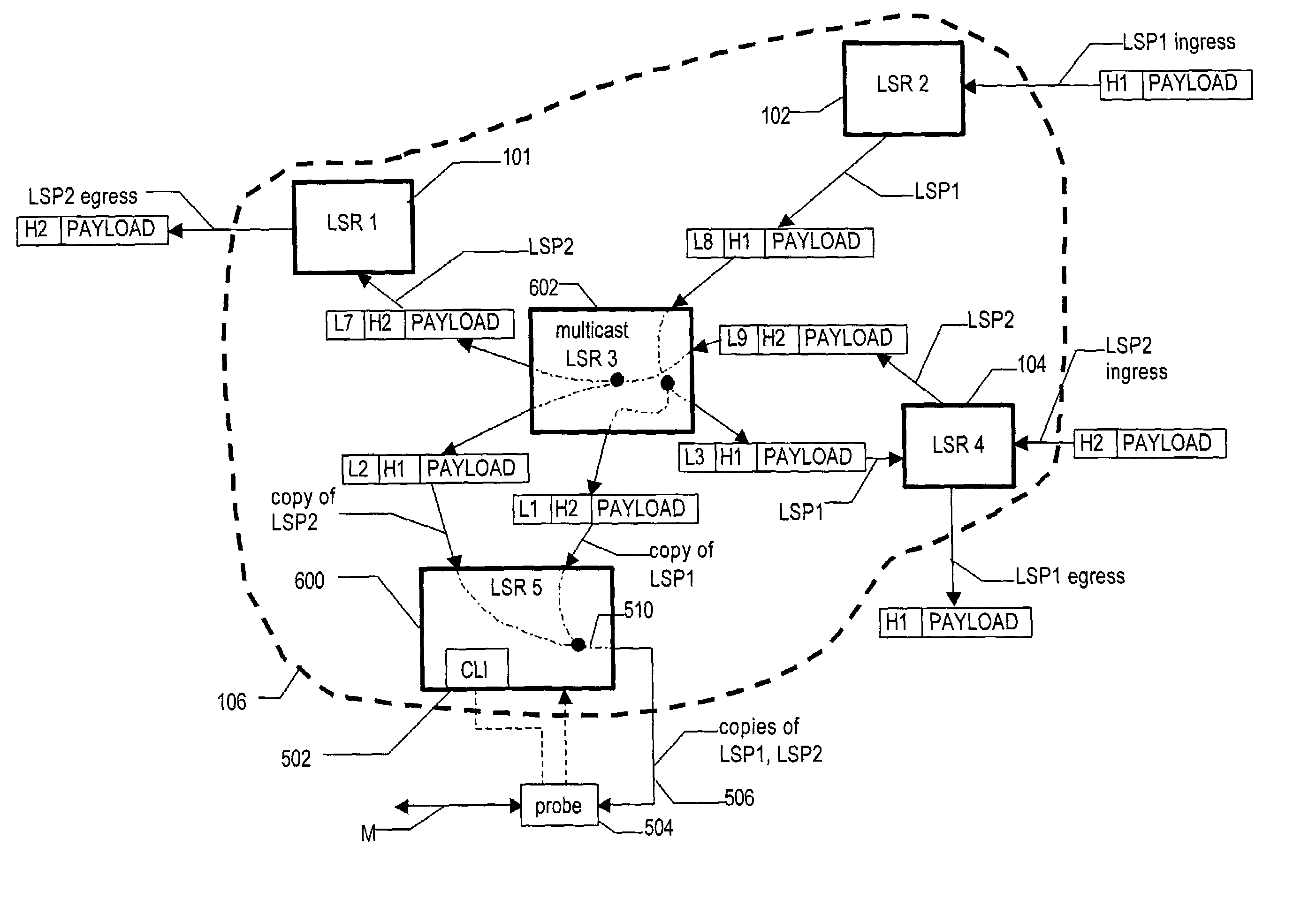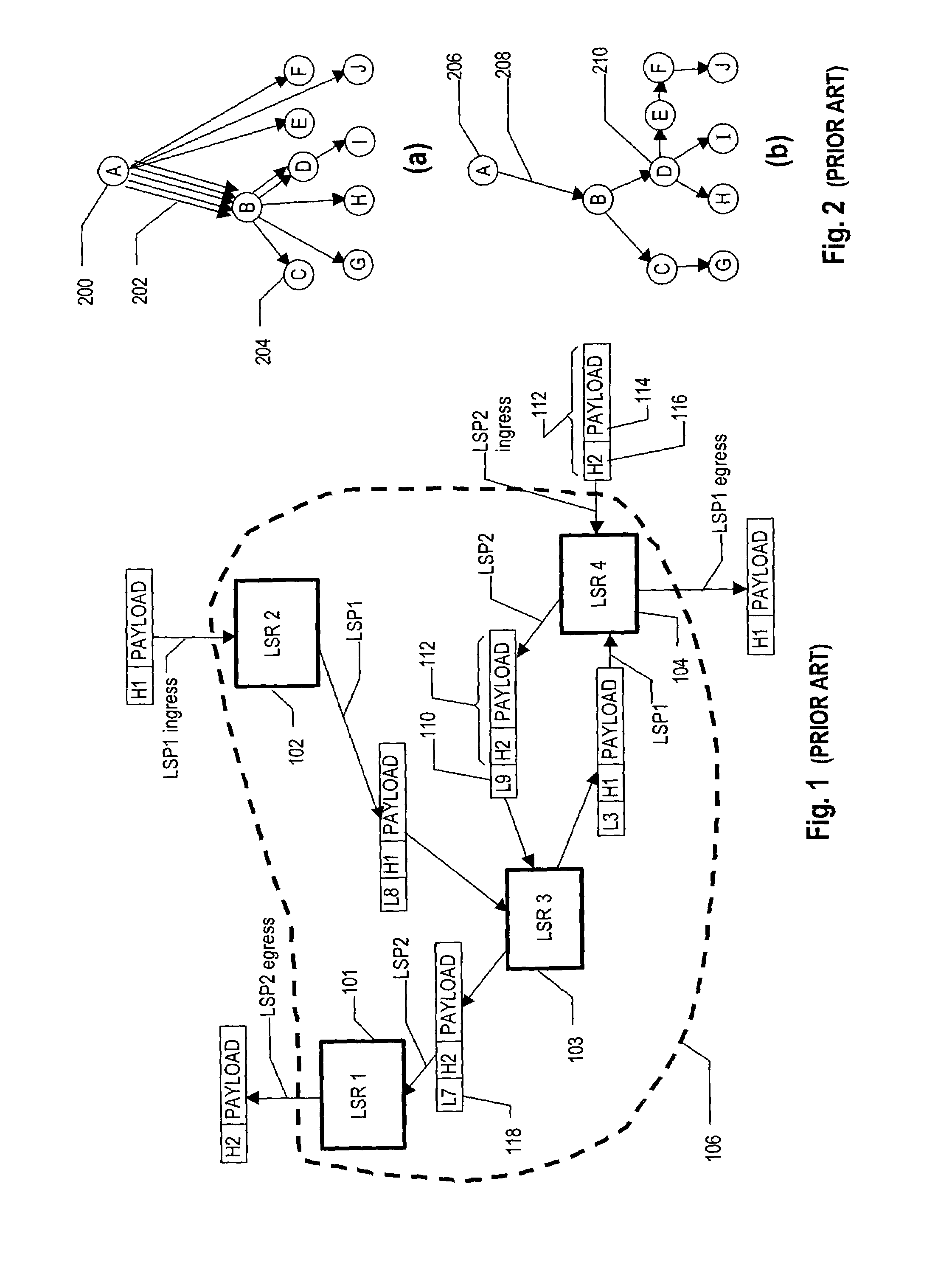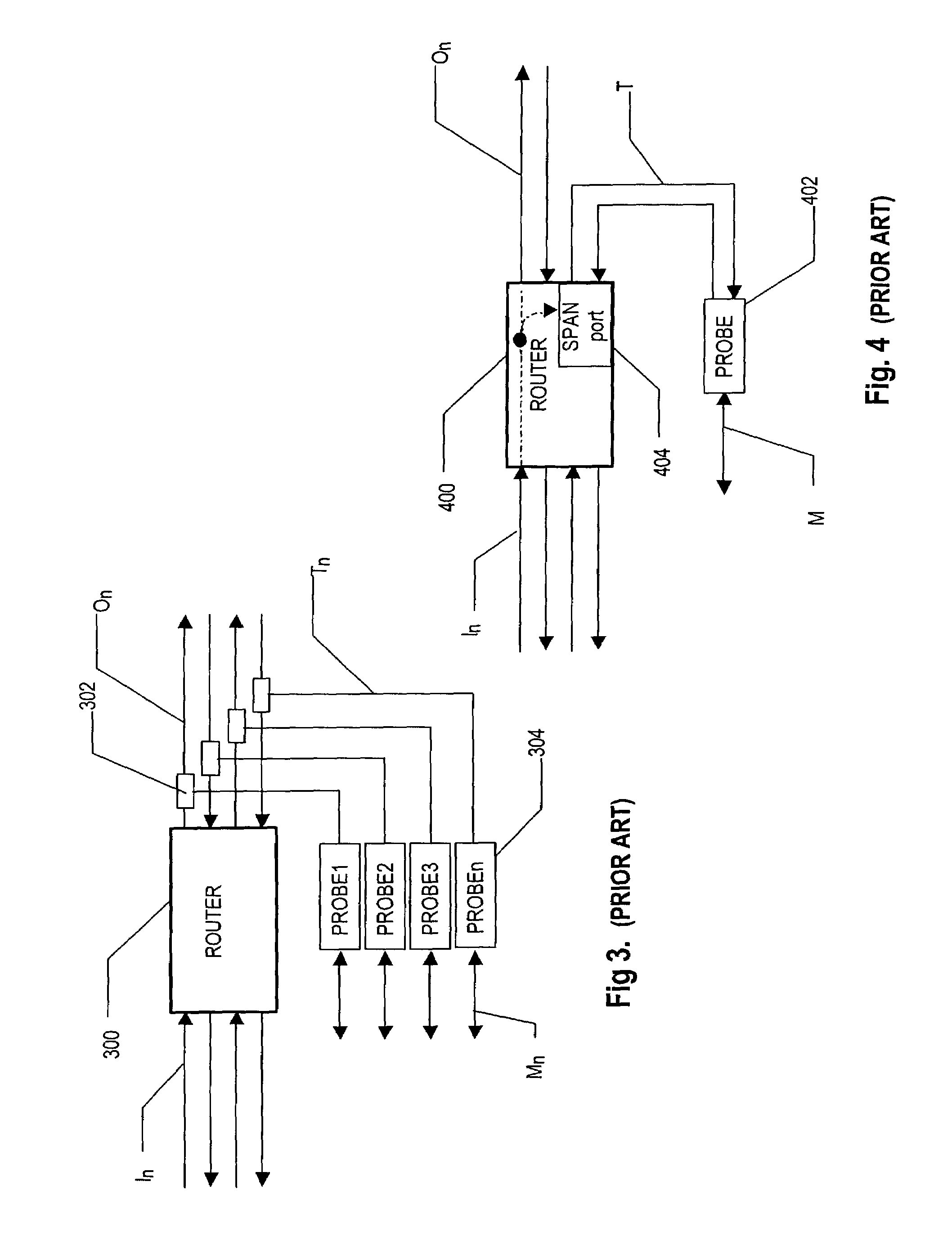Monitoring communications networks
a communication network and monitoring technology, applied in the field of monitoring communications networks, can solve the problems of increasing the difficulty of simplistic monitoring, requiring disruption of physical links, and additional intrusion into the operation of the network, so as to achieve the effect of reducing the overhead of monitoring the network and more efficient web broadcasts
- Summary
- Abstract
- Description
- Claims
- Application Information
AI Technical Summary
Benefits of technology
Problems solved by technology
Method used
Image
Examples
Embodiment Construction
[0035]This invention is not specifically limited to embodiment in either hardware or software. The following description is generally valid for either implementation, special differences being pointed out as required. The mixture of hardware and software, which is used in a given application will depend on many factors familiar to the skilled person. Such factors include the bandwidth of the network, the complexity of the monitoring tasks, the suitability of the hardware available at the time for the tasks required, the relative development costs of the different solutions, and the expected scale of production.
Background to Label Switching
[0036]FIG. 1 shows a small label switching communications network comprising Label Switching Routers LSR1101, LSR2102, LSR3103& LSR4104, interconnected by physical links (not shown explicitly in the diagram) that carry virtual links known as Label Switched Paths (LSPs) LSP1, LSP2. A collection of LSRs and links is known as an ‘LSR cloud’106, the ou...
PUM
 Login to View More
Login to View More Abstract
Description
Claims
Application Information
 Login to View More
Login to View More - R&D
- Intellectual Property
- Life Sciences
- Materials
- Tech Scout
- Unparalleled Data Quality
- Higher Quality Content
- 60% Fewer Hallucinations
Browse by: Latest US Patents, China's latest patents, Technical Efficacy Thesaurus, Application Domain, Technology Topic, Popular Technical Reports.
© 2025 PatSnap. All rights reserved.Legal|Privacy policy|Modern Slavery Act Transparency Statement|Sitemap|About US| Contact US: help@patsnap.com



